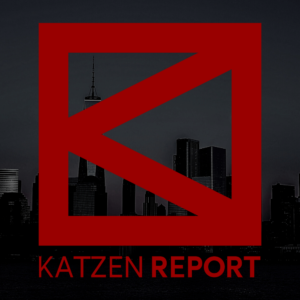With continued speculation of a luxury market slowdown causing a stir in NYC, I thought I’d offer my perspective on the topic.
It is important to start with an understanding that not all “luxury product” is created equal, and real estate in many ways is a “local market.” While some may assume the latter means the happenings in NYC do not necessarily reflect the conditions in Oklahoma, “local” takes on a whole new meaning within New York City. Supply/demand characteristics, trends, and patterns can vary greatly not only by neighborhood, but by street and even building. Therefore, while certain trends no doubt can be pervasive, I tend to be reluctant to generalize even when addressing one segment of the market given the highly nuanced nature of NYC real estate.
Nevertheless, there have been recent concerns that there are not enough buyers for the ever-increasing number of New Development units. In some cases, these concerns are valid. Ironically, Q1 closings of the sales of many new developments made in 2013 and 2014 are propping up current statistics; the average price of Q1 home closings was over $2 million, up 18% from a year earlier. To some extent, these numbers are masking the true state of underlying conditions given the lagging nature this data. As Jonathan Miller points out, “The flood of new development closings represents a different time in the market. It is not a testimonial to the current state of the market, but rather a testimonial to an underappreciated period in 2013 and 2014 when there was apparently a lot more activity than people realized.” I would tend to agree. However, putting aside the midtown developments often referred to as “Billionaires’ row” given the unique and limited buyer base they appeal to (which makes it very interesting to speculate how this situation will play out given its potentially greater price inelasticity; dropping a $60 million penthouse by $10 million doesn’t necessarily change the dynamic), I believe that the traditional market forces of supply and demand and the impact on price will go a long way towards recalibration. This is the design of free markets, despite the fact it may take some time. I was quoted recently in a Real Deal article stating, “Some developers are repositioning projects based on the current market. The old adage that once you go up in price, you can’t go down? Not true. We’ve seen people do it and do very well.” Even if a new equilibrium point requires a slight fall in home prices in certain market sectors, the end state will be one with more orderly transaction flow and a healthier supply/demand relationship.
In addition to simple price movements, the behavior of developers evaluating new opportunities also is adjusting to current conditions. According to Cushman & Wakefield, 175 to 200 development sites citywide will be sold in the first quarter of 2016, 37% fewer than in the record first quarter of last year. In some cases developers are waiting until projects are closer to completion before soliciting buyers, in other cases they are modifying and/or re-cutting floor plans to appeal to a wider buyer universe. In addition, developers also have been dealing with lenders growing a bit less aggressive when providing construction financing, a big change in sentiment from just a year ago. Interestingly, we hear land prices already have declined due to softening conditions. While this certainly will help to make the numbers and returns work for new projects, expect developers to become increasingly discerning when evaluating location, size, value, timing, and marketing plan.
In recent years, it seems “luxury product” has become synonymous with condominium new development. As I said above, luxury real estate is not all created equal. While certain segments of the new development market are experiencing some indigestion, the resale market has fared better. This in part is due to the fact that many new developments are concentrated in select parts of the city and are competing against one another (e.g. midtown and downtown), while the resale market is more diverse in location. In many areas, supply remains tight even for high end product. Take the luxury market on Central Park West for example; there are less than 50 apartments for sale from Columbus Circle up to 90th Street. Therefore, I am careful not to generalize conditions prematurely.
Away from the numbers, it is important to keep a pulse on market sentiment more generally. As you might expect, the constant media attention on “record NYC real estate prices” only to be followed in the same broadcast by the deluge of global economic and geopolitical concerns, a stronger US dollar hindering foreign buying of US dollar assets, and equity market volatility has made buyers a bit more hesitant. This is human nature; no one wants to buy at the wrong price at the wrong time. However, we have been encouraged by buyers still “trusting the product,” and thus demonstrating a willingness to pay a fair price for the right properties. In my opinion this will continue, with the product most vulnerable to a fall being that which has pushed the boundaries of location, price, or design hoping to be bailed out by the overall upswing in the City. We are now entering a time which truly will test whether a “high tide lifts all ships.”
As with all things, only time will tell what the future holds for the luxury market here in the City. The recently begun 2016 Spring season, traditionally the most robust time of the year for home purchases, surely will shed some light on the market’s direction. While there certainly are reasons for concern, I am nowhere near ready to sound the alarm bells on the high end market overall given its diversity here in NYC.

